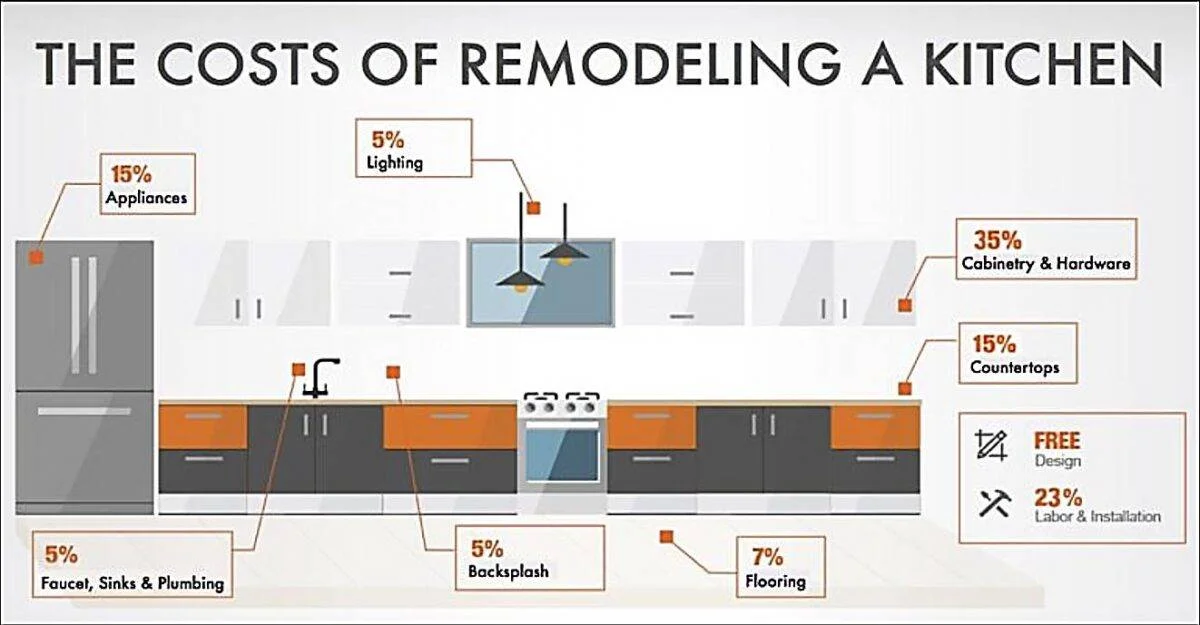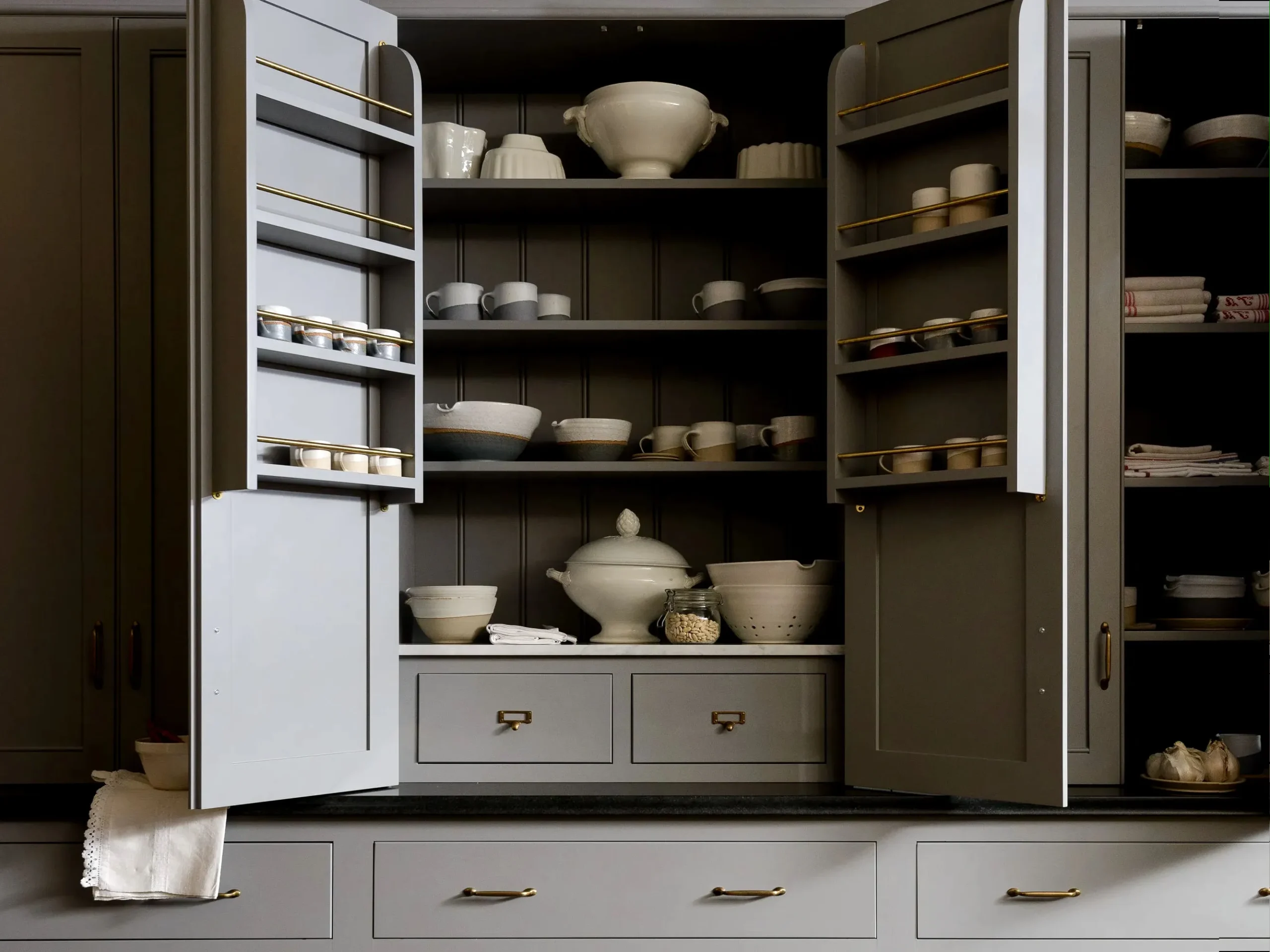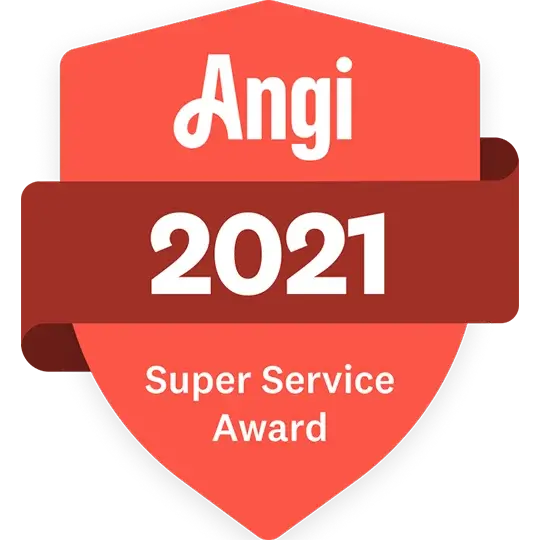Are you dreaming of a kitchen makeover but worried about the costs? Look no further! In this comprehensive guide, we’ll provide you with practical and affordable kitchen renovation advice tailored specifically for Florida homeowners in 2024. From cost-saving tips to budget-friendly design ideas, we’ve got you covered. Let’s dive in!
Table of Contents:
Assessing Your Budget:
Before diving into any renovation project, it’s crucial to determine your budget.
Start by Listing Your Must-Have Upgrades: Begin the budgeting process by listing down your must-have upgrades for your kitchen renovation. These could include essential items like new cabinets, countertops, appliances, flooring, or lighting fixtures. By identifying your priorities upfront, you can allocate your budget more effectively.
Allocate Funds Accordingly: Once you’ve outlined your must-have upgrades, it’s time to allocate funds accordingly. Determine how much you’re willing to spend on each aspect of the renovation, keeping in mind that certain items may require more significant investments than others. For example, high-quality countertops or appliances may command a larger portion of your budget compared to less expensive items like paint or hardware.
Be Realistic About What You Can Afford: It’s essential to be realistic about what you can afford when setting your renovation budget. While it’s natural to want a dream kitchen, it’s crucial to balance your desires with your financial reality. Take an honest look at your finances and set a budget that you can comfortably afford without stretching yourself too thin.
Prioritize Essentials to Avoid Overspending: With a limited budget, it’s essential to prioritize essentials to avoid overspending. Focus on addressing critical issues or areas that will have the most significant impact on the functionality and aesthetics of your kitchen. By prioritizing essentials, you can ensure that your renovation project stays within budget while still achieving your desired outcomes.

Planning Your Layout:
Optimizing your kitchen layout is a crucial aspect of any renovation project, impacting both functionality and cost. By carefully planning your layout, you can create a space that not only meets your needs but also maximizes efficiency and minimizes expenses.
Consider Keeping the Existing Layout: One cost-effective approach to kitchen renovation is to consider keeping the existing layout. By working with the current configuration of your kitchen, you can avoid the need for extensive plumbing and electrical work, which can significantly reduce costs. This approach is especially beneficial if your existing layout already functions well and meets your needs.
Consult with a Professional: While sticking to the existing layout can be a cost-effective option, it may not always be the best solution for every kitchen. Consulting with a professional designer or contractor can help you explore alternative layout options that better suit your needs and budget. A professional can offer valuable insights and expertise, helping you make informed decisions about layout modifications that can enhance the functionality and aesthetics of your kitchen without breaking the bank.
Explore Budget-Friendly Layout Options: When planning your kitchen layout on a budget, there are several budget-friendly options to consider. These may include simple layout modifications such as relocating appliances or cabinets, optimizing storage space, or reconfiguring the workspace to improve workflow. By exploring these budget-friendly layout options, you can achieve a more efficient and functional kitchen without overspending.
Looking for reliable construction experts? Fill the form below to get a: 100% Free Consultation
Choosing Cost-Effective Materials:
Selecting the right materials is a critical aspect of any kitchen renovation project, especially when aiming for affordability without sacrificing quality. By opting for cost-effective materials, you can achieve the desired aesthetic and functionality while staying within your budget. Here are some tips for choosing budget-friendly materials for your kitchen renovation:
Laminate Countertops: Laminate countertops are an excellent choice for budget-conscious homeowners. They come in a wide range of colors and patterns, offering versatility in design. Additionally, laminate countertops are durable, easy to maintain, and more affordable than natural stone or solid surface options.
Vinyl Flooring: Vinyl flooring is another cost-effective option for kitchen renovations. It is available in various styles, including wood, tile, and stone patterns, allowing you to achieve the look of more expensive materials at a fraction of the cost. Vinyl flooring is also durable, water-resistant, and easy to clean, making it ideal for kitchens.
Prefabricated Cabinets: Prefabricated or ready-to-assemble (RTA) cabinets are a budget-friendly alternative to custom cabinetry. These cabinets come in standard sizes and styles and can be easily assembled and installed, reducing labor costs. Despite being more affordable, prefabricated cabinets are still durable and stylish, offering plenty of options to suit your kitchen’s design aesthetic.
Shop Around for Deals and Discounts: When purchasing materials for your kitchen renovation, be sure to shop around for deals and discounts. Many retailers offer sales, promotions, and clearance items that can help you save money on materials. Additionally, consider buying in bulk or purchasing floor models or discontinued items to maximize savings.

DIY vs. Hiring Professionals:
When embarking on a kitchen renovation project, one of the most crucial decisions you’ll face is whether to tackle the work yourself or hire professionals. While DIY projects can be tempting due to their potential cost savings, there are certain tasks best left to skilled professionals. Here’s a breakdown of DIY vs. hiring professionals for your kitchen renovation:
Assess Your Skills: Before deciding whether to DIY or hire professionals, honestly assess your skills and experience in home improvement projects. Are you comfortable with basic tasks like painting and installing cabinets, or do you lack experience in more complex tasks like plumbing and electrical work?
Consider the Complexity of the Project: The complexity of your kitchen renovation project should also influence your decision. Simple cosmetic updates like painting cabinets or replacing hardware may be suitable for a DIY approach. However, tasks involving plumbing, electrical work, and structural modifications require specialized knowledge and expertise.
DIY Pros and Cons: DIY projects can be cost-effective and empowering, allowing you to personalize your space and take pride in your work. However, DIY projects also come with risks, including the potential for costly mistakes, injury, and delays. It’s essential to be realistic about your abilities and limitations.
Benefits of Hiring Professionals: Hiring professionals for certain aspects of your kitchen renovation ensures quality workmanship, compliance with building codes, and peace of mind. Professionals have the skills, tools, and experience to tackle complex tasks efficiently and safely, saving you time and hassle in the long run.
Finding the Right Balance: Ultimately, finding the right balance between DIY and hiring professionals depends on your budget, timeline, and comfort level. Consider outsourcing tasks that require specialized expertise or pose safety risks, such as plumbing, electrical work, and structural modifications, while tackling simpler tasks yourself.
Maximizing Storage Space:
Efficient storage solutions can enhance functionality without breaking the bank. Consider installing open shelving, magnetic racks, and pull-out organizers to maximize every inch of space. Utilize vertical storage options to free up countertop and floor space.
When it comes to kitchen renovation, maximizing storage space is essential for enhancing functionality and organization. Fortunately, there are several cost-effective solutions to make the most of every inch of space in your kitchen. Here are some tips for maximizing storage space while sticking to your budget:
Open Shelving: Consider replacing traditional cabinets with open shelving to create a more spacious and airy feel in your kitchen. Open shelves not only provide easy access to frequently used items but also visually expand the space by eliminating bulky cabinet doors. You can display decorative dishes, cookbooks, and jars of ingredients on the shelves to add personality to your kitchen.
Magnetic Racks: Magnetic racks are a versatile and budget-friendly storage solution for small kitchens. Install magnetic strips on the walls or inside cabinet doors to hold metal spice jars, knives, and other metallic kitchen tools. This clever storage solution keeps items within reach while freeing up valuable countertop and drawer space.
Pull-Out Organizers: Invest in pull-out organizers for your cabinets and pantry to maximize storage efficiency. These organizers make it easy to access items stored at the back of cabinets without rummaging through clutter. Opt for pull-out spice racks, wire baskets, and sliding shelves to keep your kitchen essentials neatly organized and easily accessible.
Vertical Storage Options: Utilize vertical space to make the most of your kitchen’s storage potential. Install wall-mounted racks, hooks, and pegboards to hang pots, pans, and cooking utensils. Additionally, consider adding tall cabinets or shelving units to take advantage of vertical space for storing bulkier items like small appliances, baking sheets, and serving platters.

Energy-Efficient Upgrades:
When planning a kitchen renovation, incorporating energy-efficient upgrades is not only environmentally friendly but can also result in significant long-term savings on utility bills. By investing in energy-efficient appliances, lighting, and insulation, you can reduce your carbon footprint while maximizing the efficiency of your kitchen space. Here are some key energy-efficient upgrades to consider for your kitchen renovation project:
ENERGY STAR-Rated Appliances: When selecting appliances for your kitchen remodel, opt for models that are ENERGY STAR-certified. These appliances are designed to consume less energy while maintaining high performance standards. ENERGY STAR-rated refrigerators, dishwashers, ovens, and other kitchen appliances can help lower your electricity consumption and reduce your monthly energy bills.
LED Lighting Fixtures: Lighting accounts for a significant portion of energy usage in the home. By replacing traditional incandescent bulbs with energy-efficient LED lighting fixtures, you can achieve substantial energy savings. LED bulbs consume less energy, last longer, and produce brighter, more consistent light compared to incandescent bulbs. Consider installing under-cabinet LED lights, recessed LED ceiling fixtures, and LED pendant lights to illuminate your kitchen while minimizing energy consumption.
Insulation Upgrades: Proper insulation is essential for maintaining a comfortable indoor environment and reducing energy waste. During your kitchen renovation, consider adding or upgrading insulation in the walls, floors, and ceiling to improve energy efficiency. Insulating materials such as fiberglass batts, spray foam, and rigid foam panels can help prevent heat loss in the winter and heat gain in the summer, resulting in lower heating and cooling costs year-round.
High-Efficiency HVAC Systems: If your kitchen renovation involves updating heating, ventilation, and air conditioning (HVAC) systems, opt for high-efficiency models that use less energy to heat and cool your home. Upgrading to a programmable thermostat can also help optimize energy usage by allowing you to set temperature schedules based on your daily routine.

Adding Personal Touches:
Transforming your kitchen into a space that reflects your personality and style doesn’t have to break the bank. By incorporating personal touches and creative decor elements, you can infuse character and charm into your kitchen without splurging on costly upgrades. Here are some budget-friendly ideas to add a personal touch to your kitchen:
Wall Art: Hang artwork or photographs that resonate with your taste and interests. Whether it’s a gallery wall featuring family photos, colorful prints, or motivational quotes, adding artwork can instantly elevate the look of your kitchen and make it feel more personalized.
Plants: Bring the outdoors in by incorporating plants into your kitchen decor. From small succulents on windowsills to hanging herb gardens or potted plants on countertops, adding greenery can breathe life into your kitchen space. Not only do plants add visual interest, but they also purify the air and create a calming atmosphere.
Colorful Accessories: Inject pops of color into your kitchen with vibrant accessories such as dish towels, oven mitts, and decorative bowls. Choose colors that complement your existing decor scheme and reflect your personality. Bold hues can add warmth and personality to your kitchen while making it feel more inviting and lively.
DIY Projects: Get crafty and embark on DIY projects to personalize your kitchen decor. Create custom artwork, handmade coasters, or unique serving trays using affordable materials and simple techniques. Not only are DIY projects a budget-friendly way to add personal touches, but they also allow you to showcase your creativity and individuality.
Repurposed Items: Give new life to old or unused items by repurposing them into functional decor pieces. Upcycle vintage crates as storage solutions, turn mason jars into herb planters, or repurpose old kitchen utensils as wall hooks. Embracing repurposed decor adds character and charm to your kitchen while minimizing waste.
Thrift Store Finds: Explore thrift stores, flea markets, and garage sales for one-of-a-kind treasures that add personality to your kitchen. From vintage cookware and eclectic artwork to quirky knick-knacks and unique kitchen gadgets, thrifted finds can add a touch of whimsy and nostalgia to your space.
Maintaining Your Budget Throughout the Renovation Process:
Staying within budget during a kitchen renovation requires strategic planning and disciplined financial management. Follow these tips to ensure that your project stays on track financially without compromising on quality:
Track Expenses: Keep a detailed record of all expenses related to your kitchen renovation, including materials, labor, permits, and miscellaneous costs. Use a spreadsheet or budgeting app to monitor spending and compare it against your allocated budget regularly.
Get Multiple Quotes: Don’t settle for the first quote you receive. Instead, obtain estimates from multiple vendors or contractors for materials and services. Compare prices, but also consider factors such as quality, reputation, and timeline when making your decision.
Avoid Impulse Purchases: Stick to your pre-determined budget by avoiding impulsive purchases. Before buying anything, ask yourself if it’s a necessary expense and if it aligns with your renovation goals. Avoid unnecessary upgrades or luxury items that can quickly inflate your budget.
Plan for Contingencies: Set aside a contingency fund of around 10-20% of your total budget to cover unexpected expenses or unforeseen issues that may arise during the renovation process. Having this buffer can provide peace of mind and prevent financial stress if things don’t go as planned.
Be Flexible: Be prepared to make compromises if necessary to stay within your budget. Consider alternative materials or design choices that offer a similar look and functionality at a lower cost. Flexibility and adaptability are key to navigating any renovation project successfully.

Final Inspections and Touch-Ups:
Once the renovation is complete, conduct a thorough inspection to ensure everything meets your expectations. Address any issues promptly and perform touch-ups as needed. Celebrate your newly renovated kitchen and enjoy the fruits of your labor!
Conclusion: With careful planning and strategic decision-making, achieving an affordable kitchen renovation in Florida is entirely feasible. By following the advice outlined in this guide, you can transform your kitchen into a stylish and functional space without breaking the bank. Remember to prioritize your needs, stay within your budget, and enjoy the process of creating your dream kitchen!
In conclusion, affordable kitchen renovation in Florida is possible with proper planning, smart choices, and a bit of creativity. By following the tips outlined in this guide, you can achieve the kitchen of your dreams without draining your wallet. Happy renovating!
Frequently Asked Questions (FAQs) About Kitchen Renovations in Florida
How can I determine the budget for my kitchen renovation?
Start by assessing your finances and setting a realistic budget. Consider factors like the scope of the renovation, desired upgrades, and any additional expenses such as labor and permits. It’s crucial to establish a clear budget range to guide your decision-making process effectively.
What are the essential aspects to prioritize during a budget-friendly kitchen renovation?
Prioritize essential upgrades such as flooring, cabinetry, and countertops. Focus on functional improvements that enhance usability and efficiency. Allocate your budget wisely to address critical areas while being mindful of unnecessary expenses.
Should I undertake DIY projects or hire professional services for my kitchen renovation?
While DIY projects can save money, complex tasks like plumbing and electrical work are best left to professionals. Consider a combination of DIY and professional services to optimize costs while ensuring quality results. Evaluate your skills, time availability, and the complexity of the project before making a decision.
What are some cost-effective materials for kitchen renovation?
Opt for budget-friendly materials like laminate countertops, vinyl flooring, and stock cabinetry. Explore alternative options such as reclaimed wood or eco-friendly materials for a unique and affordable touch. Compare prices from different suppliers to find the best deals without compromising on quality.
How can I maximize space efficiency in my kitchen without overspending?
Focus on smart storage solutions such as pull-out drawers, vertical shelving, and multi-functional furniture. Utilize every inch of available space efficiently to minimize clutter and optimize functionality. Consider custom storage solutions tailored to your specific needs and budget constraints.
Is it advisable to purchase pre-owned appliances for my kitchen renovation?
Pre-owned appliances can be a cost-effective alternative to brand new ones, especially for homeowners on a tight budget. Look for gently used appliances from reputable sellers or consider refurbished options with warranties. Ensure that the appliances are in good working condition and meet your requirements before making a purchase.
How can minimalist design principles help save money during a kitchen renovation?
Embrace minimalist design elements such as clean lines, neutral colors, and streamlined aesthetics. Simplify your design choices to reduce costs associated with elaborate finishes and decorative accents. Focus on functionality and practicality to create a timeless and budget-friendly kitchen space.
Are there any alternatives to replacing kitchen fixtures and fittings?
Instead of replacing entire fixtures, consider refurbishing or repainting existing ones to give them a fresh look. Refacing cabinets, resurfacing countertops, and refinishing floors can provide significant cost savings compared to full replacements. Explore creative refurbishment options to breathe new life into your kitchen without breaking the bank.
How can natural light contribute to an affordable kitchen renovation?
Maximize natural light sources by strategically placing windows, skylights, or glass doors to minimize the need for artificial lighting. Natural light not only brightens up the space but also creates a sense of openness and warmth, reducing reliance on energy-consuming lighting fixtures.
Where can I find local discounts and deals for kitchen renovation supplies?
Keep an eye out for local sales, promotions, and clearance events at home improvement stores, appliance outlets, and kitchen showrooms. Sign up for newsletters or loyalty programs to receive exclusive offers and discounts. Additionally, consider shopping during off-peak seasons or holidays when prices tend to be lower.












